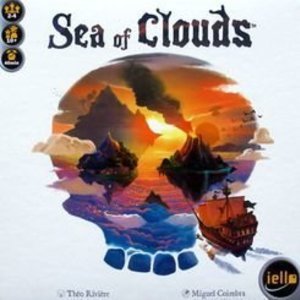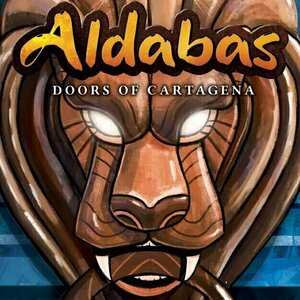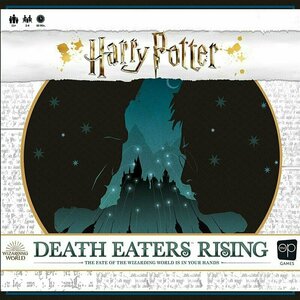Purple Phoenix Games (2266 KP) rated Sea of Clouds in Tabletop Games
Sep 5, 2019 (Updated Jul 1, 2020)
In Sea of Clouds, players are Captains of mighty air pirate ships. That’s right – flying pirate ships! Just like the pirate days of yore, your goal is to recruit the best crew, plunder for treasure and relics, and find the best rum along the way. But be careful because your rival pirate Captains have their eyes on the same prize – so make sure you’ve got a way to outsmart them and sail your way to victory!
Sea of Clouds is a game of card drafting, set collection, and push your luck in which players are trying to amass the most end-game victory points. Played over a series of rounds, players take turns drafting cards, performing bonus actions, and engaging in combat with their neighboring Captains. To setup, each player takes their chosen Captain board, the central board is placed in the middle of all players, and 1 loot card is placed face-down on each of the 3 loot spaces on the central board. The remaining cards are shuffled and create a draw pile. Now you are ready to play!
Each round consists of divvying up shares of loot between all players. On your turn, you will take the face-down card(s) in the #1 loot spot and look at them secretly. Decide whether you want to take the share, or leave it and look at the next one. If you decide to keep the card(s), add them directly around your Captain board in their corresponding spaces. If you decided to leave the share, add 1 card from the top of the draw pile to that share, and then look secretly at the cards in the #2 loot spot. Proceed in the same manner as before with the cards in the #2 and #3 loot spots, if necessary. If none of the shares catch your fancy, draw 1 card from the top of the draw deck to add to your ship. Play continues to the left, and once everyone has had their turn, move the round marker ahead on the central board, and continue on to the next round in the same fashion. At the end of certain rounds of the game, following the divvying of shares, there will be a boarding/combat turn – players will compare the combat strength of their crew (recruited during the divvying of shares) to that of their neighboring Captains. If your crew’s strength is greater than your neighbor, resolve any rewards/effects on your pirate cards. If your strength is less than your neighbor, you lose the combat and do not collect any rewards. Once all combats have been resolved, everyone discards all their crew cards, and the next round begins. At the end of the game, players count up their victory points, and the player who has amassed the most is the winner!
I’m going to get right to the spoilers and say that I love Sea of Clouds. It has some of my favorite mechanics (set collection and card drafting) and it is easy to teach, learn, and play. Do not let the simplicity of play fool you, however, because strategy is definitely a key to victory. One thing that takes this strategy to the next level for me is that there will be times when all players know what cards are in each share of loot. You’ve got to pay attention to which shares your opponents are taking, and figure out a way to stop them from collecting complete sets, or try to force them to collect a share they may not necessarily want. Also, as shares go unclaimed, they get more cards (and eventually money) added to them, so you have to weigh the risks of collecting a share because of one specific card, even though there may be a ‘bad’ card in that share for you. You always have to be adjusting your strategy based on what cards show up in each share, so there is no idle time for any player in this game.
Another neat thing I like about the strategy of this game is that all the cards have backs based on their card type. So all Relic cards have the same back, all Crew cards have the same back, etc. Even though you may not know what is on the other side of the card, you might just take a chance on a share of loot because it has the card types you are trying to get. That’s where the push your luck comes in, because until you look at a share of loot, you aren’t sure if that card is the one you need. Maybe share #1 has a couple cards you could use, but share #2 has a relic card that could be the final one in your set! Are you willing to risk passing up a decent share of loot to see if the next share has what you need? Or maybe the top of the draw deck has the card type you want – would you pass up all 3 shares of loot for one blindly draw card in hopes that it is to your benefit? There is no single ‘right’ way to play, and that is what makes this fun.
The only drawbacks of this game for me are the boarding/combat turns. I like the idea of this player interaction, but it doesn’t always work fairly in my opinion. At the end of each boarding/combat turn, all players discard all of their Crew cards, and you have until the next boarding phase to recruit a new crew. And sometimes, just based on the luck of the draw, you just never get the opportunity to hire anybody. Maybe your opponent takes the share with a Crew member before you get a chance to, or maybe the deck just isn’t evenly shuffled enough to get enough Crew cards out into the playing field. So if you have no Crew, you automatically lose the combat, and that can be detrimental to your strategy – opponents could steal or discard some of your cards, and cause you to lose end-game points. Maybe if there was a draw pile where you could pay a certain amount of gold to hire a Crew member, that would make the game feel a little more fair in the combat department. But ultimately, you’re at the mercy of the luck of the shuffle/draw, and sometimes it just doesn’t balance out.
All in all, I think Sea of Clouds is a great game. It’s a relatively simple game, but one that still requires strategic thought. The push your luck element feels unique in this game because you don’t really lose anything if your luck runs out, you just don’t necessarily get as far as you wanted. The game itself is pretty to look at – the artwork is very well-done and the colors really pop and draw the eye to the cards. This may not be in my Top 10 of favorite games, but it’s one that I will definitely be keeping in my collection. Take a chance on this one if you haven’t so far – it might surprise you. Purple Phoenix Games gives Sea of Clouds a high-flying 12 / 18.

Twilight Struggle
Tabletop Game
"Now the trumpet summons us again, not as a call to bear arms, though arms we need; not as a call to...
Boardgames 2playergames PoliticalGames HistoricalGames
Purple Phoenix Games (2266 KP) rated Aldabas: Doors of Cartagena in Tabletop Games
May 16, 2021
In Aldabas, players are (loose) urban planners in historic Cartagena attempting to build their city block with the most influential people in town. By drafting the most strategic door cards the winning player is they who scores the most points at the end of the game.
DISCLAIMER: We were provided a prototype copy of this game for the purposes of this review. These are preview copy components, and I do not know for sure if the final components will be any different from these shown. Also, it is not my intention to detail every rule in the game, as there are just too many. You are invited to download the rulebook, back the game through the Kickstarter campaign, or through any retailers stocking it after fulfillment. -T
To setup, place out 12 coins per player on the table, create the door offer dock, shuffle the Doors deck, and give each player five Doors and one Vault board. Each player then chooses one card from their hand to secretly place under their vault for endgame scoring. Place the shuffled Doors deck next to the Dock and deal one card to each space beneath the Dock. The game is now setup and ready to play!
On a turn the active player will take two actions. The actions are: Take Two Coins, Buy One Door, and Place One Door. Obviously, the first action has the player adding two coins from the supply to their play area (called the purse). To Buy One Door the player simply chooses one of the Door cards from the Dock area and pays its cost to the supply. The two cards on the leftmost spaces of the Dock are free, while the other cards cost coins according to their placement at the Dock. Once a card has been purchased, a new card is revealed and added to the rightmost space, sliding all other Doors cards to the left.
To Place One Door, the active player will choose a Doors card from their hand and place it on their block they are building in front of them. The Vault card acts as the bottom leftmost space, with the block encompassing a 4×3 grid above it and to the right (as shown below). Once the Door is placed, any special power it offers is triggered immediately, as are the Doors cards’ powers adjacently below and beside the newly placed Door card.
The catch here is that when placing Doors, it is illegal to place them orthogonally adjacent to Doors of the same color, and the spaces both below and to the left of the placed Door cannot be empty. Essentially, Doors need to be placed in a cone starting from the Vault. Play continues in this fashion with players taking turns until either the supply runs out of coins, a player fills up their 4×3 grid with Doors, or the Dock cannot be refilled because the Doors deck is empty. Then final scoring occurs, which is based on individual cards as well as any suit-specific bonuses offered.
Components. Again, this is a prototype copy of the game, so final components may be different in many different ways upon a successful Kickstarter campaign. That said, this game looks GORGEOUS on the table. The colors are all super vibrant, and the great knockers really pop. Excellent theme and art here carry an already-spiffy game. The game is basically a bunch of cards and some coin tokens. They are all fine quality, especially for a prototype. I have no issues at all. I love the way this looks!
So I love the way it looks, but do I love the way it plays? I think it’s a good little game. It reminds me a little of Viceroy with the color combinations and placement rules. While Viceroy is good, Aldabas is much better in almost all ways. Aldabas plays quicker and has more easily digestible rules. If you check Viceroy’s profile on BGG you will see that many users enjoy it, and it currently sits just above rank 1000. So when I say Aldabas gives a similar feel but delivers a more enjoyable game experience, I expect Aldabas to perform better in the BGG rankings, if that’s your thing.
The special powers on the Doors cards, though I didn’t really mention them, range from VPs at game end, to moving coins to and from the Vault onto Doors to make them more valuable, to gaining coins from the supply or stealing them from other players, to offering discounts on purchasing Doors from the Dock. There are some other fun rules used in scoring, but I will let you experience those on your own with your backed copy.
So final word from me on this one is that I highly recommend it and hope you give it a shot. It offers lots of strategic game play with a medium-sized table footprint, but boy it looks great on that table! Turns are fast, and everyone is in the game until end scoring, so I never felt there was a runaway winner issue. If you are like me, you will definitely want to be adding this to your collection. Big recommendations from me, I know you will enjoy it.
Purple Phoenix Games (2266 KP) rated Bob Ross: Art of Chill Game in Tabletop Games
Jun 30, 2021
Bob Ross: Art of Chill is a set collection, hand management, card drafting game that has its players attempting to complete masterful paintings before the master does in order to collect bonus “chill points” to win the game. Whomever manages to reach ultimate chill status will be victorious and can return to feeding Peapod, their rascally pocket squirrel.
To setup, place the easel and one of the shuffled painting panels upon it. Place the other panels (paintings) nearby. Place the main scoreboard nearby as well and place the shuffled Chill Cards on its space upon the board. The Technique Cards deck and the Art Supplies Card decks will be shuffled separately and placed below the board with four cards from each deck revealed as an offer. Place the Bob Mover (Bobeeple) on the easel in the first location printed on the panel. Each player will receive a palette, the scoring cube of their color to be placed on the scoreboard, the three Feature Markers, and three random Art Supplies Cards. The game may now begin!
On a turn players will be rolling the Bob die and carrying out its action. These actions are playing a paint card from hand onto their palette, drawing one Art Supplies Card from the deck to their hand, performing one free Action prior to the Action phase, or resolving the Bob die face. The Bob die face requires players to reveal a new Chill Card and resolve its immediate effects, or effects that will remain in play until a new Chill Card is revealed. Secondly, the Bobeeple will move to the next printed stopping point on the panel.
Once the die has been rolled and resolved, the active player will be able to take any three actions available in any order: Draw an Art Supplies Card (from the deck or from the offer), Sweep the Art Supplies Card (discard all face-up cards and reveal four new ones), Apply Paint to Your Palette (by placing it on your palette from your hand of cards), Wash Your Palette (by discarding cards from one of the palette areas to clear it), Earn a Technique Card (by discarding two like-cards from the hand of cards in order to score more VP for painting features in the future), or Paint a Feature (by discarding the required brush from the player’s hand of cards and the correct matching paints already applied to their palette).
Once complete, the next player will take their turn of rolling the die and completing three actions. Should players paint a feature on the panel before Bob moves to that spot on the panel the player(s) will gain extra bonus Chill points. Players may still paint features for points if Bob already has as well, they just will not receive the bonus Bob points. Turns will continue in this fashion until the moment one player has reached ultimate Chill and won the game.
Components. This game has a fair amount of components and I am happy to say they are all great! The cardboard components (palettes, score board) are good. The cards are all lovely linen-finished. The other player components are fine as well. The painting panels are excellent and feature actual Bob Ross masterpieces, and there are 15 double-sided panels in the box! The coolest component is certainly the easel though. It seems to be a somewhat real and functional easel (not that you would really want to paint on it) and it amps up the table appeal when setup and in play. I love the components and I am so glad that Big G Creative made a Bob Ross game with beautiful components. Anything less would be sacrilege.
It probably comes as no surprise that I love this game. I have always loved watching Bob Ross from when I was a child even up through my adulthood and I am relieved to be able to still watch him in action via Netflix. The game, though, is rather surprising. I certainly wasn’t expecting to like this as much as I do and was quite shocked to find out that there was actual substance in a Bob Ross game. Especially when it was stationed next to “games” like Who Wants to Be a Millionaire, Throw Throw Burrito, and the like. I enjoy the nostalgia in seeing my favorite colors in my hands like Phthalo Blue, Cadmium Orange, and Sap Green.
I don’t know if I would really consider this a gateway game, though I believe it really depends on the gamers with whom you are playing. There will be many times when you are concentrating on collecting the colors needed to finish a feature before Bob only to frustratingly never see that color on offer nor in the cards you draw and then the painting has to be refreshed because people can’t seem to stop rolling Bob on the die. However, if you play with people who can literally chill when things don’t go their way, this is a gem. Purple Phoenix Games gives Bob Ross: Art of Chill a 21 / 24. The only thing missing here is a way to, “beat the devil out of it,” and it would make my heart sing.
Purple Phoenix Games (2266 KP) rated Harry Potter: Death Eaters Rising in Tabletop Games
Dec 3, 2020
Harry Potter: Death Eaters Rising is a game utilizing the Rising system of games (which also includes Batman, Star Wars, and SpongeBob Squarepants as of now) for two to four players. It is a cooperative game where players will take charge of one of the three factions: Dumbledore’s Army, Hogwarts, or Order of the Phoenix in order to defeat Voldemort and his Death Eater cronies. Though Voldemort will be menacing players throughout the game, the players will not be able to attack him directly until about half way through the game. Can you survive long enough to battle the big bad?
DISCLAIMER: We were provided a copy of this game for the purposes of this review. This is a retail copy of the game, so what you see in these photos is exactly what would be received in your box. I do not intend to cover every single rule included in the rulebook, but will describe the overall game flow and major rule set so that our readers may get a sense of how the game plays. For more in depth rules, you may purchase a copy online or from your FLGS. -T
To setup, follow the instructions in the rulebook, but generally the central board will have the large painted Voldemort “mini(?)” and three areas that hold Place cards: Hogwarts, Ministry of Magic, and Diagon Alley. Players will be given one Leader card in their chosen faction (obviously Order of the Phoenix is best) to begin the game. Set aside the damage counters, corruption gem tokens, and Spell tokens in their own piles. Shuffle the main deck of character cards, reveal and place three per Place and then insert the Voldemort card somewhere near half-way into the shuffled deck. The game may now begin.
On a player’s turn they must complete the following steps: 1. Travel to a Location, 2. Roll Voldemort Die and resolve actions, 3. Roll, assign, and resolve Wizard dice, and 4. End Turn. After taking these actions it will be the next player’s turn.
To Travel to a Location, the active player will place their faction-matching Mission token upon one of the Places on the board. This is the Place that the active player may now be able to recruit Wizards from and also attack enemies.
Once at a Location, the active player will Roll Voldemort Die and resolve actions thenceforth. The game affords players a large green Voldemort Die to be rolled. Upon the faces are sides that instruct players to turn the Voldemort mini Left or Right one Place and attack all Wizards there (including all Wizards on a player’s team if Voldemort is now in their Location). Two faces will also show the Dark Mark. When this face is rolled Voldemort does not move, but will attack all Wizards at his current Place (by placing damage counters on the card) as well as activating ALL Death Eater Dark Mark abilities. Not all Death Eaters will have Dark Mark abilities, but when they activate, they can be deadly.
Now that Voldemort has had his fun, the active player will Roll, assign, and resolve Wizard dice. Players will have in front of them faction cards that indicate how many and of which color dice to be rolled on a turn. These dice may be added to or otherwise altered as a result of recruited Wizards’ special abilities as well. Once a player takes the appropriate dice to be rolled, they must roll them and begin assigning faces to Wizards for recruitment, Death Eaters for damage, or other abilities on team cards. Recruiting more Wizards to a player’s team or damaging Death Eaters is how the game progresses because each time a card is recruited or defeated it is removed from the main board and a new card replaces it. As long as at least one die is removed from the player’s pool each time the dice are rolled the player may continue rolling to match symbols needed.
To End Turn, the active player will add any recruited Wizards to their team, discard any defeated Death Eaters, Wizards, or Places, and retrieve their Mission token to be used on the next turn.
Play continues in this fashion of taking turns through the four steps until the Voldemort card is drawn. He then comes into play as an enemy that may be attacked like normal. Players win when they defeat enough Death Eaters and Voldemort, but can lose if the players allow a Place to be completely corrupted (usually by Death Eater card abilities), allowing four Places to be corrupted, if too many Wizards have been defeated per number of players, or any player has all their Wizards defeated from their team.
Components. This game includes a lot of components of varying style and materials. The cards are all very glossy (meh) and feature headshots of the characters mostly. The board is three pieces fit together like a pizza and is great. The damage counters are little translucent red cubes, and the corruption gem tokens are also translucent gems but gray in color. The best components in the game are by far the Voldemort, well, statue and all the dice. The Voldemort piece is incredible, and pre-painted. The stance he is taking is formidable and somewhat intimidating when he’s pointing his wand right at you. The dice have been upgraded to a matte finish (as opposed to yucky polished finish) and feature some great inking. The one negative I have to say is also about the dice: I believe that the faces sometimes can be confusing because the icons are more detailed than is necessary. While some would argue that detailed dice are better than merely serviceable dice, I would much rather see a sword on a face and know it’s a sword than to look at a die face and wonder what I am looking at exactly. In any case, that’s my opinion and yours may be different. Let’s still be friends.
So overall this is a big upgrade over the Thanos version of a Rising game for several key reasons. In Thanos I always felt like every turn could lose the game for us, and Thanos seemed to gain the Infinity Stones too quickly for my taste. In this version, you know you have half a deck before you are able to even fight Voldemort, so being able to tackle his minions until then seems more surmountable. The dice have been upgraded, and the Voldemort die is wonderful and easy to read. That was an issue I had with Thanos: his die was hard to read and the colors were not distinct enough. Not a factor in this version at all. I also feel that this version has much more faction-dependency and interplay. What I mean is that an Order of the Phoenix card may require a player to also have a Dumbledore’s Army card on the team in order to unlock access to their special ability. I like that. I like a well-balanced team, though my first game saw me recruit eight Order of the Phoenix cards and one Dumbledore’s Army card. We won, but I felt bad.
So it’s no surprise that I love this game. I find it better and easier to learn/play than the Thanos version. I like the components a whole lot more. I like the interplay between the factions more. I am sad that I prefer Marvel to Harry Potter, but I do not dislike Harry Potter, let it be known. And I do enjoy this version much more. Purple Phoenix Games gives this one a triumphant 10 / 12. My wife and I truly love it and can’t wait to play it again very soon. If you are looking for a good Rising game, I certainly recommend you look at Harry Potter: Death Eaters Rising. It’s a guaranteed hit if you or a loved one is a Harry Potter fan. For sure. It’s brilliant.
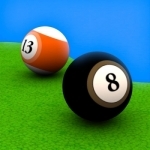
Pool Break 3D Billiards 8 Ball, 9 Ball, Snooker
Games and Lifestyle
App
Pool Break is a suite of games featuring several variations of 3D Pool, Billiards, Snooker, and the...
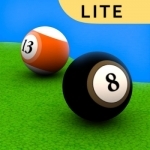
Pool Break Lite 3D Billiards 8 Ball Snooker Carrom
Games and Sports
App
Pool Break Lite is a free suite of games featuring several variations of 3D Pool, Billiards,...
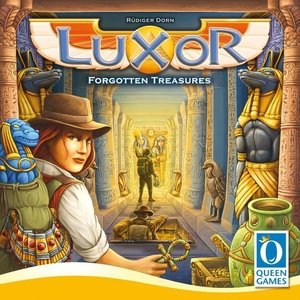
Luxor (2018)
Tabletop Game
On the hunt for priceless treasures, groups of adventurers explore the legendary temple at Luxor....
Boardgames QueenGames DornGames

Let’s Cook - A Match 3 Game
Games and Entertainment
App
Learn to cook amazing dishes from around the world in this addictive match-3 game! You've just won...
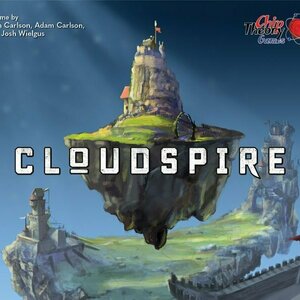
Cloudspire
Tabletop Game
Cloudspire is 1-4 player strategy game heavily influenced by both tower defense and MOBA...
